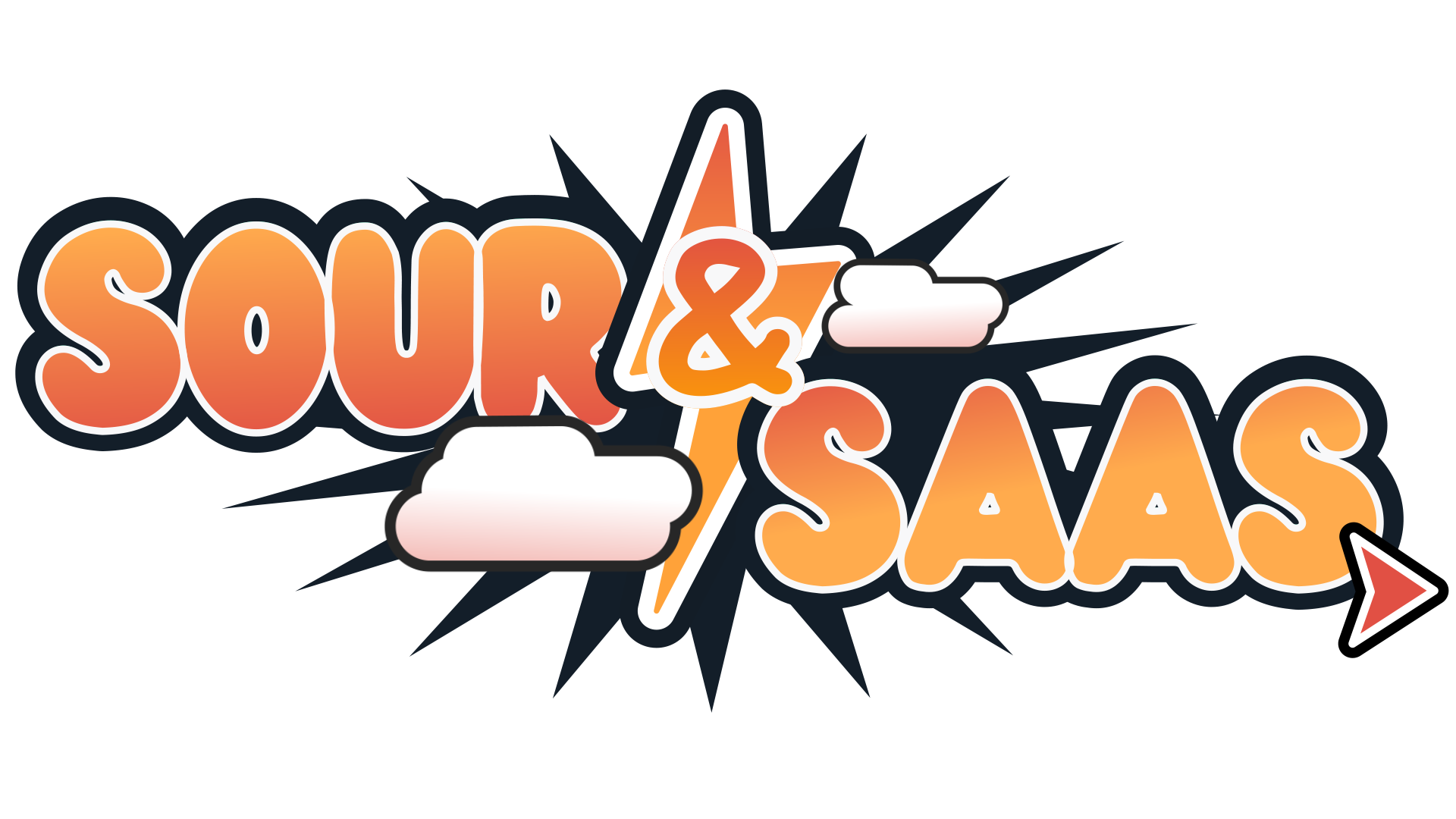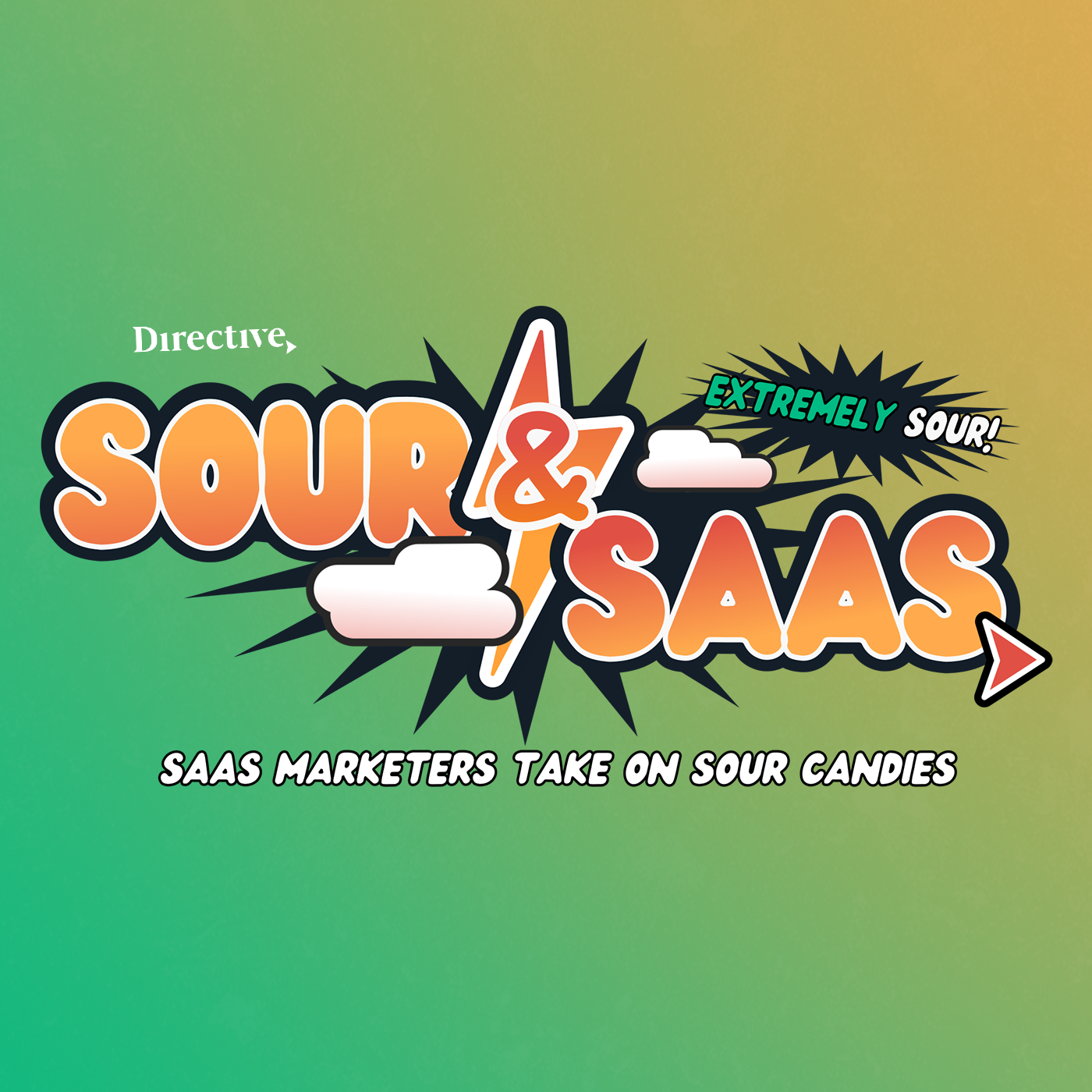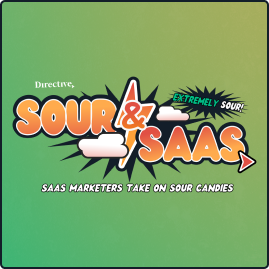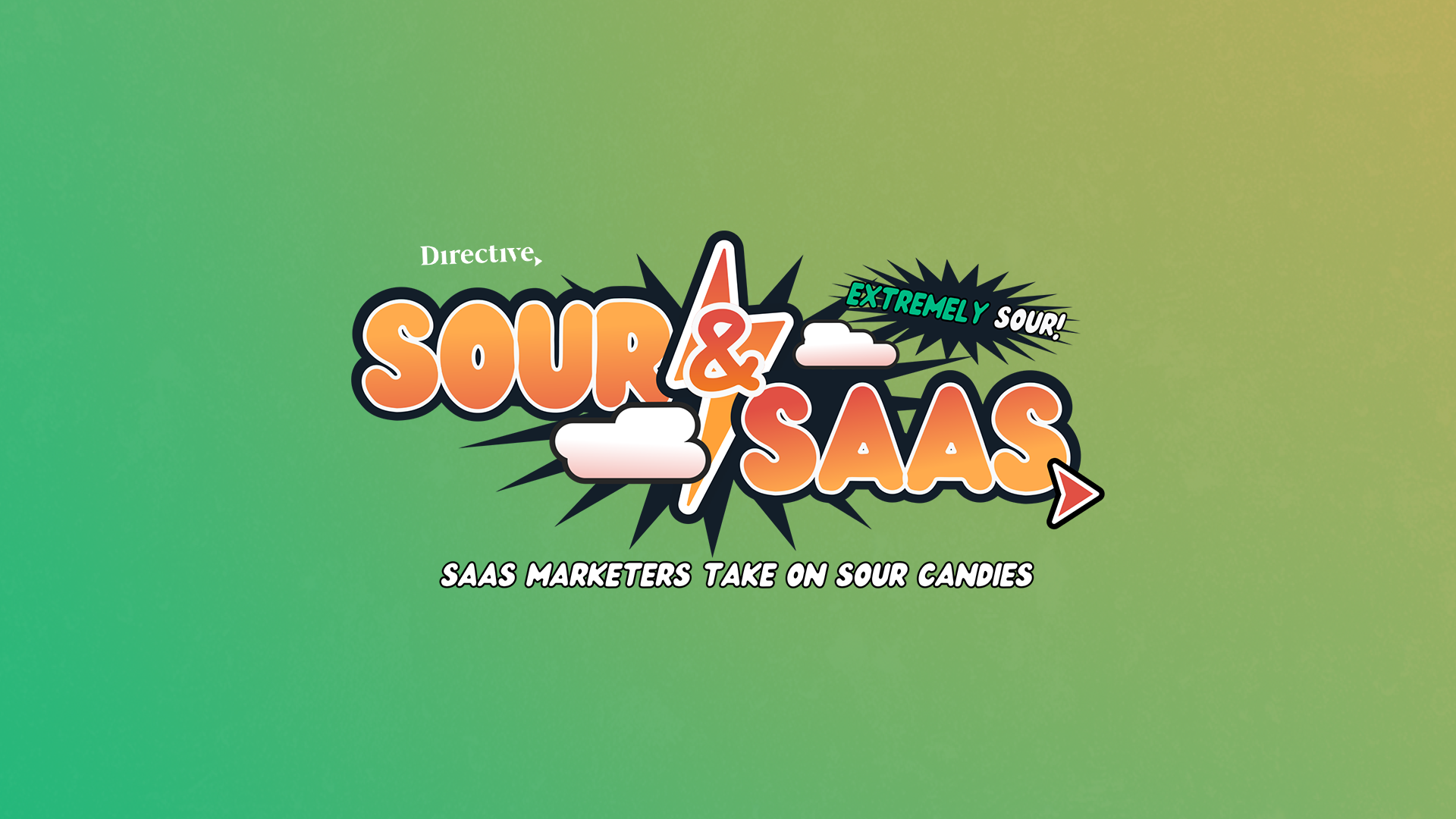Sour & SaaS with Ryan Narod, Head of Marketing at Mutiny
- 0.5
- 1
- 1.25
- 1.5
- 1.75
- 2
Garrett Mehrguth: Well, hello everybody. And welcome to another episode of Sour and SaaS. I'm very, very excited today to be talking about personalization with Ryan Narod from Mutiny. Welcome to the show, Ryan.
Ryan Narod: Thanks for having me. Great to be here.
Garrett Mehrguth: I've made the cardinal sin again. I'm like a pro at this. It's almost a bit at this point. How do I say your last name? We get so excited about marketing while we're doing this.
Ryan Narod: Nerod. Narod. Either way.
Garrett Mehrguth: Where's that from originally?
Ryan Narod: It's Russian, Ukrainian.
Garrett Mehrguth: Oh, hell yeah. That's awesome. My last name's Mehrguth. So I mean, it's universally wrong. So I should be better at this. But very, very excited to chat with you. One of the things I loved about Mutiny, and let's just dive right in, is the playbooks. What are y'all doing with the playbooks? I think that's such a cool type of content. Can you tell me more about what you're trying to do with your playbook content, and why that's so important to you?
Ryan Narod: Totally. So one of the really cool things about Mutiny is that we realized if you want to do personalization, there's about thousands of things that you can personalize on your website. And so, we realized that if we built a tool that just gives you what we call the science of personalization, the A/ B testing, the no code editor, that's not enough. Because you land in the tool, and it's almost like an airplane cockpit, hundreds of knobs and dials you can turn, and you don't know where to start. And so, what we've built into our product is actually a community. And the way that our community works is when Mutiny users do something in the product that results in a successful experiment, we ask," Hey, do you want to go publish this as a playbook to our library?" And so, within our product, we have hundreds of playbooks that you can basically steal. And with one click, deploy that personalization to your website. So it's everything from, how do you personalize for financial services to how do you personalize for enterprises or startups? And so that all lives within our product. And then what we do is, we go ahead and interview those playbook authors. And we write their story in the form of a conversion secret that lives publicly on our website. So that creates this amazing flywheel of external content to internal, inside the product community. And that works really, really well for us.
Garrett Mehrguth: I saw that, Ryan. Now, I'm just curious, why not just push the whole library public and use it as an acquisition channel? Why do it as an interview version? Why not just directly launch this playbook and then they create an email and they're in your product. Because I thought that would be dope. So I'm just curious what you think about that.
Ryan Narod: Yeah. I think it's a great idea. So what we do today is we automatically create playbooks based on what our customers are doing inside of our product. And sometimes those playbooks are lacking in just context. Like, what was the business problem? What other solutions did you consider? And so, in our product, we're able to support hundreds of playbooks because they are automatically recommended to our customers based on AI. So we match, here are the most relevant playbooks to you. And so, it's not this overwhelming experience of-
Garrett Mehrguth: Like, if you have this integration and that integration, our AI will recommend maybe this playbook or things like that?
Ryan Narod: And it's also based on website traffic data. So you have visitors that are similar to someone who created this playbook.
Garrett Mehrguth: 40% of conversions are coming from the enterprise segment. Maybe try this playbook.
Ryan Narod: Exactly.
Garrett Mehrguth: Understood. That's really, really clever. Now, one of the things I do like about y'all's marketing, so on that playbook note, it's kind of like the drift version but UGC, to a certain extent, right? It's kind of what we're doing there. We're kind of riffing off that, but then making it more user generated. Okay. Now when you do your product marketing, I thought one of the things you actually do really, really well, and it's unique. And I just want to hear what you think about it because I think it's different. It's genuinely different. So you have almost just a platform. You don't really go into product feature sets. Most SaaS companies these days are a culmination of a bunch of good ideas that they then try desperately to interweave together into a platform. Do you get what I'm saying? Like Product A, Product B, product C, and then there's a learn about our product suite. And they do this infographic that tries to tell the whole story together. You all just said, nah, we're just going to have one product page. What's your thought on that? Do you want the product pages? Do you like the idea that it's one cohesive product? Is that better? What's your take on that? Because I thought it was kind of different.
Ryan Narod: That's a great question. I think there are a few pieces to our product, but my philosophy is 80% accurate, a hundred percent clear. So even if we're missing talking about all of the bells and whistles of Mutiny. We're really, really clear with our messaging about here's who it's for, here's how it works, and here's how to use it. And that's the experience our buyers get when they talk to our sales team or they ask for pricing. We are super transparent about who the product is for, how you use it, some of the how you stand to benefit from it. And so, that's why we've packaged it in the way that we have on our website.
Garrett Mehrguth: Well, no. And I think the packaging's actually great. So my next note was, I thought you did amazing outcome based messaging. So one of the reasons I actually liked your strategy is because I think, because you don't have to go," Look what we do. You should care." You say," Look how we are going to affect the goals you care about." And I think that does such a better job for you when it comes to resonating with your audience. So I was really, really impressed with that. But I have this weird thing in my brain where, I don't like to follow the crowd. And I don't think you all do either, based on how you're doing your marketing. And so, the crowd right now, and I don't understand it mathematically, because I'm not doing this. And most of our clients are more B2B than freemium. But there's this financial modeling methodology these days where they're trying to piece their product out to its smallest biteable unit. And then they're driving this freemium acquisition to then monetize it. Now, to me, that makes it really difficult, in my perspective, to do paid media and other types of advertising because you're going to have a very AOV, and your LTV cap ratio and your payback period is going to be really, really poor. How do you see this cohesive product advertising being better than productized advertising, if that makes sense, for your customer acquisition costs and your capital allocation?
Ryan Narod: Yeah, that's a great question. I think conceptually, as a marketer myself and a buyer of other marketing technology, I personally hate coming into buying a small piece of the product and then always continuously having to be upsold. And so, I think the value of this outcome based product marketing, if you will, is that you're buying the Mutiny platform because you care about unblocking yourself as a marketer, not being reliant on engineers and being able to test and iterate and personalize your website, and ultimately increase conversion rates. And so, we're not going to go and start piecing that out into, well, do you want Bundle A or Bundle B or Bundle C? Really, because we are leading with this value of here's the outcome you get. We want people to experience that outcome without feeling like they are going to be penalized for growing or for utilizing the product and being more successful.
Garrett Mehrguth: Let's talk about that though, because this is not a shot at Optimizely, but I can't really say this without taking a shot at Optimizely. I mean, you all get to exist because their pricing model is that bad. And I don't mean that in like. But you have that much opportunity because Optimizely is that difficult to hire as a marketer. And then they're also that difficult to implement as a marketer. So when I'm looking at that personalization space that you're playing in, how do you all think about, because at the end of the day, there's no way your founder and your finance team isn't trying to think about when your clients are more successful with Mutiny, how do you make more money? That's kind of the beauty of SaaS, is that you can grow what I call variable revenue. So how do you all think about growing your clients and your accounts? And how do you think pricing structure should work in the personalization industry?
Ryan Narod: Yeah, so I think the note on Optimizely, it's a bit of apples and oranges. So Optimizely is a fantastic A/ B testing platform if you're running a robust A/ B testing program. I think they do a great job. Mutiny was purpose built for personalization. And so, those are two ways to go about this conversion problem. And we can talk all day about how that's different or how we do that differently. But to think about pricing and answer your question. Right now the price of Mutiny is based on monthly website traffic. And so, that roughly correlates to, larger companies that have more traffic end up paying more for the product. And that sort of creates a growth path for us as our customers grow and get bigger. A lot of our customers are some of the fastest growing companies in B2B SaaS. And so, all of our sort of customer traffic trends are up into the right. So it's a great metric to tie ourselves to.
Garrett Mehrguth: Well, I like it too because it delivers on the promise of the product. And I think that's what's important about when you do usage based pricing. I think HubSpot sometimes runs into trouble with this contacts thing, because you can't monetize all contacts universally. And so that usage based pricing is tough. Versus website traffic, to me, makes sense because if you're able to better monetize your traffic due to Mutiny, ideally you should be able to invest more into driving traffic, and thus both parties grow concurrently, if that makes sense.
Ryan Narod: Exactly. It's not too dissimilar from the model of paid acquisition platforms, where you're paying this variable cost for traffic. We're sort of the other side of that, if you will. You get all this traffic to your site, now it's all about how do you convert them into leads, pipeline, customers, whatever metrics.
Garrett Mehrguth: I'm a inaudible, let's say. And you're a percent of traffic to a certain extent, right. And that's kind of that logic. Now, I love that. Now two questions where I'm not sure I'm on the same page as you, and I want to understand it. Your community page doesn't seem to have a community. Maybe I missed it. And I loved it. I was like, where's the actual? Because I have a community. And you hop on a Slack group, and then you can talk to each other. So how does your community work?
Ryan Narod: I love that question. So I think you're right. We call it the conversion community. I think we do have a community, it just doesn't have a Slack group yet. And so what I mean by that is, and we interview, I talk to our customers all the time. And we have a lot of customers who say, Mutiny makes me feel like I am part of a community, even though there's no Slack group. And so the way we do that is, we've got really amazing in person events that we do monthly, whether it be small dinners, CMO get togethers. We do round tables and training sessions where we bring some of our major amazing angel investors like Emily Kramer, former CMO of Carta and Asana. She's talking about how do you set goals in marketing? She's teaching our customer community about that. And so we've got the elements of the community without this go to place in between to stitch those touchpoints together. I don't want to give away too much.
Garrett Mehrguth: I can tell. I can tell you're thinking on this. You're like, yeah, bro. I know.
Ryan Narod: There's something that works. And I think coming soon, it's very top of mind for us to bring some of the offline and synchronous activities into what people more traditionally consider a community.
Garrett Mehrguth: I like that. Sour and SaaS. Are you ready for some Sour Babies?
Ryan Narod: Here we go. Haven't had this in 10, 15 years. So we'll see how I handle it. Oh, they're double packaged.
Garrett Mehrguth: Oh yeah. We don't. I started early. Sorry, Ryan.
Ryan Narod: All right. Here we go.
Garrett Mehrguth: Okay. Now, I want to warn you. The second one's the worst.
Ryan Narod: Not too bad, yet.
Garrett Mehrguth: Why don't you have playbooks on the menu? I think it's your best content. I'm just going to ask. Why not playbooks in the menu? I feel like that's your best content. Break it down for me.
Ryan Narod: So we wanted to.
Garrett Mehrguth: Next to the product, you know what I mean? It's like, ah, you taught me something. And I can hit this button and I get it.
Ryan Narod: You're talking about playbooks on why don't we have it on the-
Garrett Mehrguth: It's in the footer. But it's not in the main nav. And I just think it's your best content.
Ryan Narod: So we wanted to bring playbooks into the community. We think that what makes Mutiny's community special right now is that you're creating content within our product to help other marketers within the community. And so, playbooks are sort of one pillar of the community.
Garrett Mehrguth: Okay.
Ryan Narod: And so, if you click on our community page, overwhelmingly, that's where you're going to see our playbooks. I think we're going to incorporate that more clearly as we launch V2 of our community.
Garrett Mehrguth: Understood. I see what you're saying. It's just because you're trying to stitch it all together still. And along those same lines where you do some stuff where I'm just looking at it and I'm like, why? For example, the case studies. They're all audio. Where's my video? I was looking at it and I was like, I've never seen someone do audio only. So part of me was like, what the hell? The other part of me was like, this is actually kind of cool. I just got to ask Ryan, why is he only you doing audio? Because in my head I've never been like, you know what I want to do today? Listen to some case studies.
Ryan Narod: I just want to listen. It's a great question. There's a very functional answer. And then there's a very Mutiny answer. The Mutiny answer is, we want to do things differently. Every case study are these polished, manicured videos of customers saying exactly-
Garrett Mehrguth: They're almost so good that you don't believe the person what they're saying.
Ryan Narod: Right. Right.
Garrett Mehrguth: crosstalk.
Ryan Narod: So, I think across our brand, we want to just activate assets that make you raise your eyebrow and say, why? Why are they doing this? I don't know if you found some of the Easter eggs on our website, but go around our website and click on some of our weird raccoons. You'll see some funny, funny, funny things pop up. And that's part of our brand DNA, is to just constantly surprise and delight. The more functional reason is, we want to make customers comfortable. This is a conversation, this is an authentic unscripted conversation with our customer. They don't need to prepare for it. There's no script. There's no hair and makeup. And so that ultimately, I think, for us creates really authentic stories.
Garrett Mehrguth: Are you all outbound? I see why your product works for inbound. But you have this outbound tab.
Ryan Narod: Yeah.
Garrett Mehrguth: What do you think about that?
Ryan Narod: I think this is maybe an under- leveraged secret weapon here. If you think about how most companies do outbound, they hire a bunch of fresh grads right out of school, they give them a really big target and they say, go at it. And so then they go and they look you up, they look me up, they see where we went to school. They write these really creepy emails. And they do their best. Who can blame them? They have big targets. And so, what I've always preached and done throughout my career is, how marketing is in an amazing place centrally to do outbound. And the reason for that is, marketers are really good at copy in product marketing and they have access to that. And they're also really good at technology and merging data and all of those things. And so, I've always orchestrated my outbound teams. And I say teams very loosely because it's always been one person doing.
Garrett Mehrguth: I love that. My own outbound person/ team.
Ryan Narod: The way I've always set that up is, this needs to be someone who's really, really good at wringling data, above all else. I was like, we have the resources to write really good copy. And so, our product is actually the secret weapon for them. Because if you wringled all that data and you have data on all of your target accounts. And some of that data may not be obvious. Some of that data, you may need to find from other databases or you may need to hire a contractor to manually go down their site. But imagine a massive spreadsheet with a hundred rows. So what our teams always do is, they mail merge almost every single column into an email so it feels highly personalized. But then the secret weapon is, we use that same data via our outbound product. You can think of that as a mail merge for your web page. So it spins up thousands. If you have a thousand target contacts, a thousand pages, so mutinyhq. com/ garrett @ directive, and you'll get your page and you click into that. And it's exactly the story of, here's why you, as Garrett @ directive need to use Mutiny. We understand your persona. We understand your vertical as an agency. And we put that all together in a really cohesive value prop on one page.
Garrett Mehrguth: Do you think there's enough uptick to justify that cost and the time for someone to set that up?
Ryan Narod: It's all done at scale. So if you're already pulling the data that you're going to use in your outbound emails, then it's actually very easy for you to upload that same CSV. And we have a Salesforce integration, if that's where you store your data, into Mutiny. And it spits out thousands of pages at scale. And we even can send that URL of that page. And even the screenshot of that page into a tool like Outreach. So you can actually, at scale, send an email that says," Hey, Garrett. I made a page for you. And here's a link and a screenshot of that page." So if you're weary about clicking links, you can see what's behind the curtain. And that for us, and I used to be a customer of Mutiny. This is the killer feature for me, that, for us, got virtually everyone who saw and opened that email to click through.
Garrett Mehrguth: I love that. Now the last sour candy. Are you ready?
Ryan Narod: I'm ready.
Garrett Mehrguth: All right.
Ryan Narod: Still chewing the popcorn. So try not to bite it.
Garrett Mehrguth: I know.
Ryan Narod: All right, here we go.
Garrett Mehrguth: Oh my God, my stomach's going to be ruined by this. All right now. Now what I always tell people is, I think that's brilliant for you at Mutiny, because it is technically your product. So they're technically interacting with the product and now they can imagine what it is for them. You think it'll work as well for me? Because I'm doing marketing for you, but I'm not doing that for you. And you are doing it as the product. So it's an integration of product to outbound, which I always think is the best strategy. I think what happens is someone hears you say that, and they're like, oh my gosh, I got to do this. They try to do it for themselves, and it doesn't hit the same. Do you think there's more to it? Or am I missing something? Break it down for me.
Ryan Narod: I think it does work. Like everything, every tactic has a half life and you can't over exploit it. But like I said, I used to be a Mutiny customer. And so, that was for a company called radar. And there, we sold into mobile apps.
Garrett Mehrguth: SDK crosstalk.
Ryan Narod: Yeah, exactly. And mobile apps vary from, this could be the McDonald's mobile app or it could be Tinder. Completely different use cases. Mobile SDKs are a very complex concept to conceptualize. So what we would do is actually write a custom location based push notification copy for every single target account. And so for example, Tinder, we may write," Welcome to New York, discover top matches here." Versus McDonald's, we may write," The MC McRib is available again at your local location." When you write that, that all lives in Salesforce. We push that out to Mutiny pages. And so when people come to our site, or we send those pages outbound, now they're saying, if I work at Tinder, I'm not seeing something weird about a hamburger. I'm seeing something that is relevant to me. And so for a lot of businesses where what you're selling is not one size fits all, this is an extremely relevant technology and tactic that you continue to deploy over and over again.
Garrett Mehrguth: I love that. It makes a ton of sense to me. And thank you. Because I always like to ask that type of question so people listening don't just blindly take anything and run with it, because there's always co- dependencies. And it's nice to hear those co- dependencies, Salesforce, data, scale, those types of things. Now, personalization's been around for a little while. It's not necessarily totally new as a concept. You all, I think, have done a really good job making it actually accomplishable, not on a massive enterprise team. Small teams can actually do it now. What's next for personalization though? Where do you think we go from here? And for you all, how do you avoid becoming the next company that disrupts Mutiny like Mutiny's disrupting others? What do you think the future of this looks like?
Ryan Narod: Yeah, great question. I think personalization has existed, but it wasn't always the right timing for it. You had challenges with data coverage before.
Garrett Mehrguth: It was like the sexy keynote that no one could do for a long time.
Ryan Narod: Exactly. I think now is the time where the surrounding ecosystem and technology exists to do this really well. I think our approach with playbooks is really novel because you're not coming in here once doing one flashy personalization and then forgetting about it. We're always recommending for you to come back and do something new in the product every single day. And as a result, people are seeing tremendous uplifts in conversion rates. So that's, I think, why Mutiny is so disruptive today? I think longer term, we're starting with web personalization. And that's a really great initial channel for us. There's so many other aspects of the customer journey that you can personalize. I don't want to give away too much of our roadmap here. But there's all these additional touchpoints, additional teams. If you think about Mutiny's role in the ecosystem, is everything post acquisition. And acquisition meaning ads. We're not touching ads. So you get someone to your site, there's an entire journey from the moment they first lay eyes on you to the moment crosstalk.
Garrett Mehrguth: Imagine if we didn't send crappy marketing automation emails, for example, or irrelevant event reminders. All these moments are touches that are driving that activation rate. And that's what you're referring to, is how do we increase your post costs per click? How do we help you monetize that by focusing on activation? And I think that's brilliant. Because if you put marketing into a financial model, this is what I do for a profession. The way I think is, most agencies, this is what's allowed Directive to be successful. Most agencies focus so much on trying to lower your initial customer, your cost per acquisition and your cost per conversion. But what they don't realize is that's an impossible task because every day an advertiser enters your marketplace, and here's the irony, it's not just your marketplace, enters the targeting of your persona. So on paid social, you're not competing with just your competitors. You're competing with every other person in the world who's advertising to your ideal customer persona. And every day they do that, they drive up the CPM and thus the CPC by a greater amount than you can either increase your price, lower your cost to goods sold, or increase your productivity. And that end result is a diminishing marginal returns on optimizing towards CPA. So the actual key, and what's allowed Directive to be successful, and why we use gift cards, is optimizing the actions you want out of a human, not the actions you want in a platform. And so by optimizing towards getting someone, for example, to a sales call, I have a lot more leverage in my financial model than if I optimize sort of getting a lower cost per click in my platform. And that's the biggest difference for us. Do you see kind of that same methodology at Mutiny?
Ryan Narod: 100%? That's the way we think about our own marketing, but also that's the problem we exist to solve. Ultimately, we want to be outcomes based for marketers as low in the funnel as possible. There's this big trend that's happening where CMOs are finally being held accountable for revenue, not visitors, not leads, not MQLs, but revenue. And so, we want to unlock their ability to drive revenue. In the same way that marketers have this incredible ability to log into AdWords or log into Facebook and punch in their targeting criteria and drive a bunch of traffic, we want them to be as scientific about the second half of that puzzle, which is converting that traffic into revenue.
Garrett Mehrguth: I love it. Ryan, this has been amazing, man. It's been really, really fun chatting with you. If anyone wants to follow along with your story or even Mutiny's journey, what's the best way for them to do it?
Ryan Narod: Find me on LinkedIn, mutinyhq. com. And thanks for having me.
Garrett Mehrguth: Well, this has been amazing, Ryan. Thank you so much for being on the show. And everyone, this is another episode of Sour and SaaS. Thanks everybody.
DESCRIPTION
In this episode of Sour & SaaS Directive CEO, Garrett Mehrguth, will be joined by Ryan Narod, Head of Marketing at Mutiny. They’ll be breaking down real SaaS marketing problems - with a sour twist.




